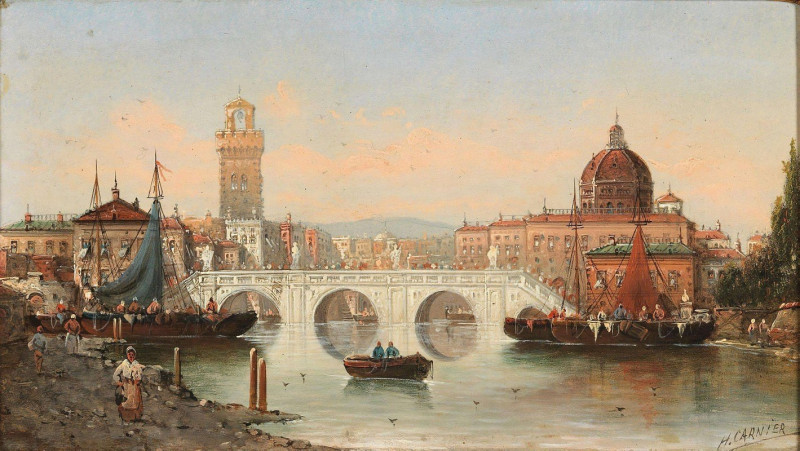Snow (circa 1909 –11)
Technique: Giclée quality print
Recommended by our customers
More about this artwork
Welcome to an intimate glimpse of the majestic tranquility captured in John Singer Sargent's watercolor painting, (circa 1909–11). This remarkable artwork features a serene portrayal of a snow-capped mountain landscape, where the interplay of light and shadow dances across rugged terrain.In "Snow," Sargent masterfully uses a palette of cool blues, stark whites, and earthy browns to depict the quiet beauty of the natural world. The composition centers on a lofty mountain peak, bathed in the soft light of either early morning or late afternoon, which casts deep shadows into the folds of the surrounding hills and valleys. The foreboding high mountain contrasts with the softer, rolling contours enveloped in snow below, creating a rhythmic balance between the formidable and the sublime.Sargent, primarily known for his portraits, here demonstrates his equally formidable skill in landscape painting. With loose yet deliberate brush strokes, he captures the essence and mood of the snowy expanse, inviting viewers to pause and reflect on the vastness and stillness of nature. This painting not only showcases Sargent's versatility as an artist but also serves as a meditative escape into the wild, untouched corners of the world.As you view "Snow," feel the crisp chill of the mountain air and the quiet solitude that only a snow-covered landscape can offer.
Delivery
Returns
Born in Florence to American expatriate parents, John Singer Sargent (1856–1925) is considered Europe's leading portrait painter of the Edwardian era. He was educated at both Accademia delle Belle Arti and Paris's École des Beaux Arts. While in Paris, under the guidance of Émile–Auguste Carolus–Duran, a portraitist and muralist, Sargent learned to paint directly from observation without first sketching, employing a fluidity, influenced by the Impressionists. Sargent created more than 2,900 paintings, mainly portraits and landscapes from his travels across the Atlantic, Europe, the Middle East and America.














































